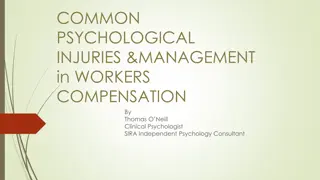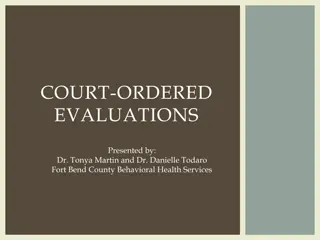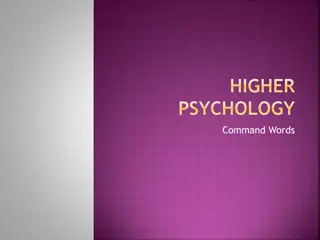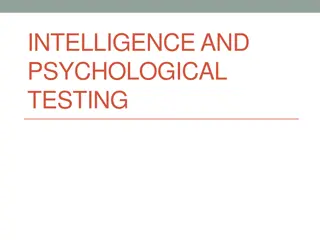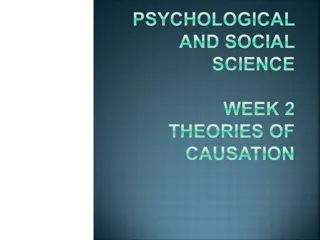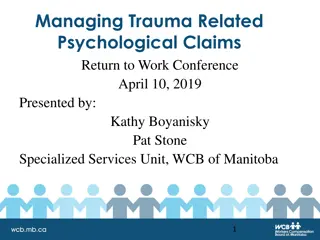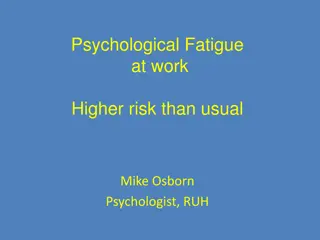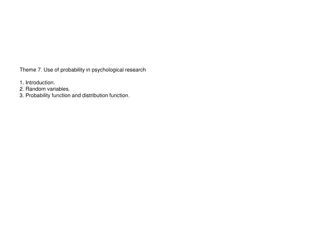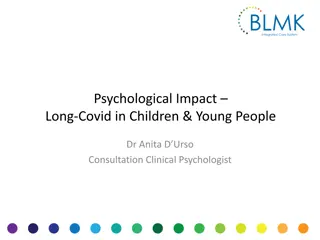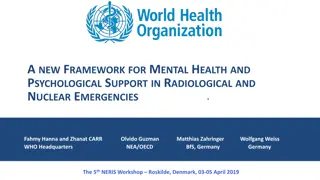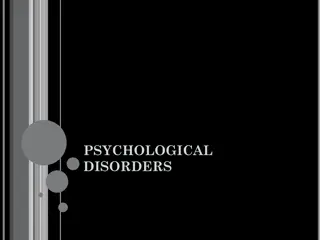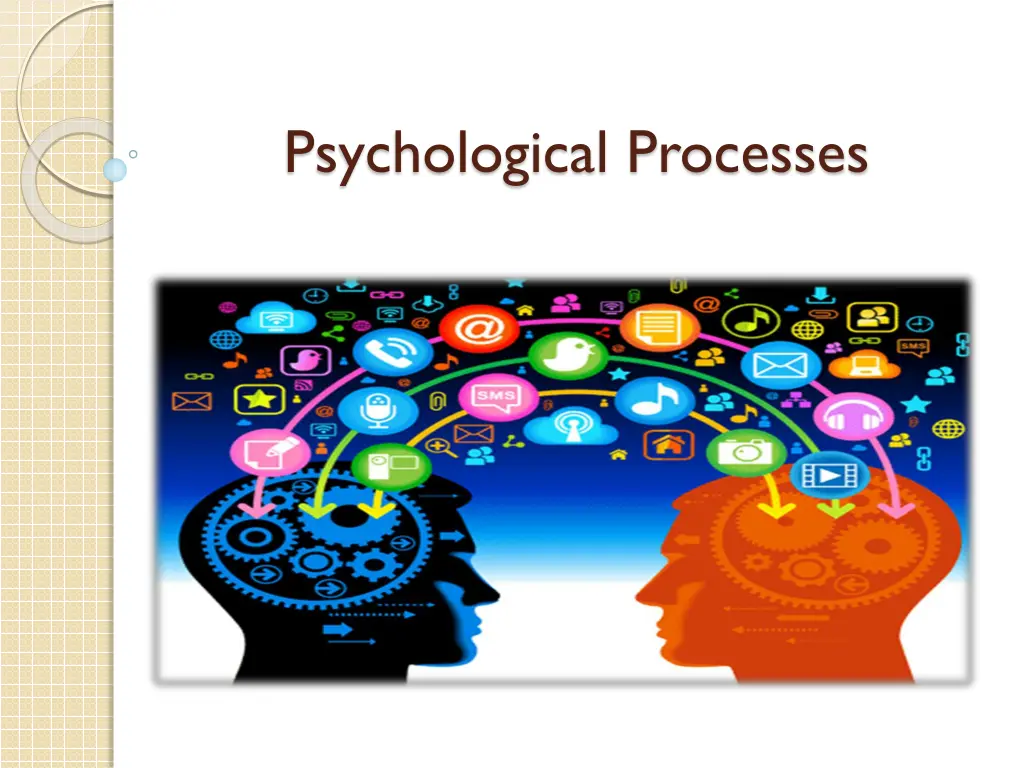
Understanding Psychological Processes in Buying Behavior
Explore the intricate psychological processes that influence the buying behavior of individuals and groups, including information processing, learning, and attitudes. Learn about attention, exposure, threshold levels, Weber's Law, personal determinants of attention, and stimulus determinants that impact consumer decision-making.
Uploaded on | 0 Views
Download Presentation

Please find below an Image/Link to download the presentation.
The content on the website is provided AS IS for your information and personal use only. It may not be sold, licensed, or shared on other websites without obtaining consent from the author. If you encounter any issues during the download, it is possible that the publisher has removed the file from their server.
You are allowed to download the files provided on this website for personal or commercial use, subject to the condition that they are used lawfully. All files are the property of their respective owners.
The content on the website is provided AS IS for your information and personal use only. It may not be sold, licensed, or shared on other websites without obtaining consent from the author.
E N D
Presentation Transcript
What are these processes? This refers to the psychological processes that govern buying behaviour of individuals and groups Information Processing Learning Influencing attitudes and Behaviour
Information Processing Attention Persuasive impact of stimulus Retention Transfer of stimulus interpreta tion to memory Exposure Achievement of proximity to a stimulus to activate the senses Acceptance Interpretati on of stimulus Comprehension Interpretation of stimulus
Exposure Given exposure to a stimulus of sufficient strength, a person s sensory receptors are activated and a message is sent to the brain. This is called a sensation, which happens after crossing a threshold level
Threshold levels Stimulus intensity below which sensation would not occur Lower/absolute threshold Above which additional doses of stimulus intensity has no effect on sensation Terminal threshold Smallest change in stimulus intensity that would get noticed Difference threshold
Webers Law The change in stimulus intensity required to be noticeable is not on the amount but on the percentage change from the original stimulus. K = I/I where K is a constant I = change in stimulus intensity I = original stimulus intensity
Attention Pre - attentive processing limitation of processing capacity. 1st stage Attention allocation of processing capacity to stimulus. 2ndstage
Personal determinants of attention Need/Motivation Attitudes Adaptation level Span of attention
Stimulus determinants of attention Size Directionality Movement Colour Isolation Intensity Novelty Contrast Learned stimuli Position Attractive spokesperson
Comprehension The interpretation of the stimulus. To derive meaning from the stimulus.
How does this happen? Stimulus Categorization Classifying Stimulus Using Concepts Stored In Memory Stimulus Elaboration Integration Between New Knowledge And Knowledge Stored In Memory Stimulus Organization How People Organize And Rearrange Stimuli Into A Meaningful Whole (Gestalt Psychology)
Personal determinants of Comprehension Linguistics Order effects Context Miscomprehension Motivation Hunger Expectation or perceptual set
Acceptance This is the persuasive impact of the stimulus
Acceptance depends on Cognitive responses SAs and CAs Affective responses - feelings that are elicited by the stimulus
Retention Transfer of stimulus interpretation and persuasion into long term memory
Methods for enhancing retention Interrelation between stimulus elements Use concrete words rather than abstract words Encourage self referencing Mnemonics jingles, rhymes, music,etc. Repetition
Memory Memory is space allocated in the brain to store processed information and retrieve it as when desired. Our brain consists of two hemispheres: Left brain logical, abstract and conceptual thinking Right brain creative, intuitive, imaginative The connection is through the corpus callosum Normally people are left or right brain dominated
Memory consists of Sensory memory iconic (visual), echoic (auditory) 0.25 sec Short term memory - < 30 sec Long term memory
Learning This is the process by which experience leads to changes in knowledge , attitudes and behaviour.
Learning takes place through Cognitive Learning from changes in knowledge and information processing Behavioural Learning observing behaviour and changes in behaviour Most consumer behaviour is learned behaviour.
Cognitive learning Rehearsal information mental repetition of Elaboration the degree of integration between the stimulus knowledge that occurs during information processing. It is motivation and ability of the individual. and existing influenced by the
Forgetting When you are unable to retrieve or access information stored in long term memory
Types of forgetting Decay Memory trace will fade with passage of time Interference Caused by learning new information over time.
Interference Momentary Forgetting Retroactive Inhibition Proactive Inhibition Recently learned information prevents retrieval of previously Learnt Information Prior learning prevents hinders retrieval and learning of new information When information is present but retrieval is difficult because of limitations in accessibility
Determinants of information accessibility Amount of information stored in memory within the same content domain Particular retrieval cues available at that time eg. Pops, jingles, key words,etc.
Measures of Cognitive learning Recognition from multiple choice Recall qualitative answers
Measures of cognitive learning Aided Recall Unaided Recall Day After Recall (DAR)
Behavioural learning Classical Conditioning Operant Conditioning Shaping Behavioral Learning
Classical Conditioning Unconditioned response Unconditioned stimulus Conditioned stimulus Conditioned Response
Determinants of Classical Conditioning Strength of unconditioned stimulus No. of pairings or strength of association
Extinction When the conditioned stimulus is unable to evoke the conditioned response. This will happen if the association with the US is broken with the CS.
Generalization When for an existing stimulus response relationship, a new stimulus similar to the stimulus is used to bring about the same response
Discrimination The process by which an individual learns to emit a response to one stimulus but avoids making the same response to a similar stimulus
Operant Conditioning Instrumental learning concerned with how the consequences of a behaviour will affect the frequency or probability of the behaviour being repeated
Operant conditioning can take place through Positive reinforcement Negative reinforcement
Applications in Marketing Sampling Trials Demonstrations Test drives Research has proved that there is 60% more penetration when free sampling is done.
Shaping The process which encourages marketers to think about what behaviours must precede the ultimate act of purchase and how these prerequisite behaviour can be encouraged through appropriate reinforcements
Vicarious learning This is the process of learning through observing the action of others and the consequences of those behaviours. It includes elements of both cognitive and behavioural learning.



